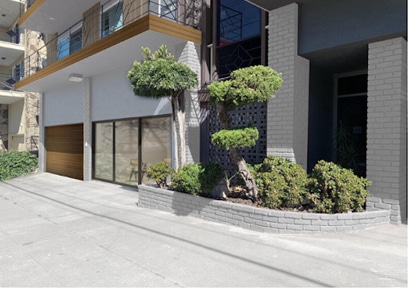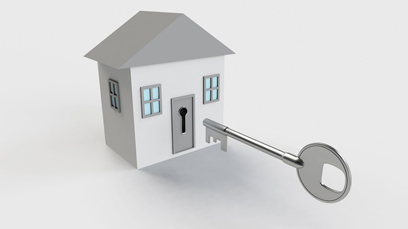This may go without saying, but before you start researching accessory dwelling unit financing, or ADU financing options, you must have an accurate understanding of what the project costs will be. Costs vary a great deal depending on the type of unit(s) you will be adding; for example, converting habitable space in an existing area of your property might cost around $100,000. Higher complexity and new construction units may cost over $400,000, and conversions from non-habitable space like garages and basements will be somewhere in between. When building or converting ADUs on multi-family properties, you must be using non-habitable space, such as unused storage areas, basements, garages, and/or parking areas.

Know What’s Feasible From the Get Go.
The best way to clearly understand costs is to have a thorough feasibility study conducted as your first step in the process. We emphasize “thorough” because all costs must be factored in: hard costs of development, including construction, labor, materials; and soft costs, including architecture and city fees. A comprehensive feasibility study conducted by ADU experts like the team at Adapt Dwellings paints a realistic picture of what your specific ADUs should cost, presented in a detailed financial analysis that will be indispensable when investigating the best overall ADU financing options.
If there is too large of a difference in what the project is going to cost and what’s possible for the property owner to finance, the project may not get off the ground. At the end of the day, ADU financing is where you ultimately determine whether your ADU project is feasible. UC Berkeley’s Terner Center for Housing Innovation suggests that ADU financing is typically the largest hurdle to those hoping to build an ADU will experience.
Lenders will be looking at a borrower’s debt service coverage ratio as the borrower’s ability to pay back a loan. Simply put, is that when you rent out a unit, deduct all expenses like insurance, taxes, repairs and upkeep, you have to have enough left over to pay the interest and principal on your loan. Lenders often look at a debt service coverage ratio of 1.25-1.35 as optimal for loans involving multi-unit properties (understanding that it will be lower until the construction phase is over).
Rental income can make or break your ADU financing options, particularly when faced with inflation that has hit everything from construction costs to planning and permit fees (not to mention the higher interest rates). ADUs have become a valuable component of addressing affordable housing options in California, though, which means that ADU financing options exist that can help make your ADU project possible. And profitable.

Deconstructing Construction Loans to Finance Your ADU Project
Think of a construction loan as a short-term loan – or an interim period loan – during the construction phase of your ADU (or ADUs) that transitions to a permanent loan after completion of the project. A variable rate is linked with the prime rate, so it will initially be higher, primarily because there is more potential risk involved for the lender. Unlike a traditional loan, there is not yet a property to secure in the event of a default.
Construction loans are designed to provide funding for building a residential property and provide the funding the builder needs at the time they need it as construction begins and progresses. Think of it as a staged approach to funding. Interest is paid until the project is finished. Since the money is provided in stages, it’s critical for costs of the project – and at each stage of construction – to be accurate (again, this is where a comprehensive feasibility study plays an enormously important role). In most cases, the lender will determine what funds are released when based on the construction plans and associated costs that the builder provides.
The best lenders will work closely with clients to structure a construction loan in a way in which the ADU project is designed and built in a way in which it adds the most value to the property. Jeff Shaddy, First Vice President, Capital Markets at Marcus & Millichap, explains that as with financing off any project, “The quality of the consultant’s response is directly proportional to the quantity and quality of the information provided.” Good analysis of viable information will produce positive results for all projects, including ADU projects. The right consultants will give you a head start on success.
A partnership with an ADU design and build specialist like Adapt Dwellings and a trusted lender like Jeff and Marcus & Millichap https://www.marcusmillichap.com/advisors/jeffery-shaddy is like working with the World Series and the Super Bowl champs combined. Jeff offers the right guidance when he says, “Good advice produces clear solutions in a complex world and certainty of execution.” After all, the main goal of an ADU project is to fully realize the additional income it has the potential to generate for your property (or properties). This type of partnership results in a team that knows how to:
- Design ADUs that maximize the use of available space to create highly desirable living spaces
- Obtain the required permits from local planning departments so that the construction loan is supporting a legally compliant ADU project
- Generate rental income that enables you to honor your loan commitments, increase your net operating income, property values, and profit from this worthwhile investment.

Adapt Dwellings Is Your Go-To ADU Resource
At Adapt Dwellings, our clients like working with us because we are honest, thorough and realistic. We offer the added benefit of being able to both design and build your ideal ADU, so you will have us be intimately involved in every stage of your project, whether it’s a large-scale ADU project in a multi-family project or an ADU conversion in a single-family home. Our continuous involvement means that the chances for surprises or delays are lessened…and the chances for success are heightened! Together with our parent company, Edrington & Associates, our combined experience in Bay Area real estate; architecture and design; building inspections; local planning and building departments; property management; legalizations; construction services; and landlord consulting positions us as your Bay Area ADU team of choice.
